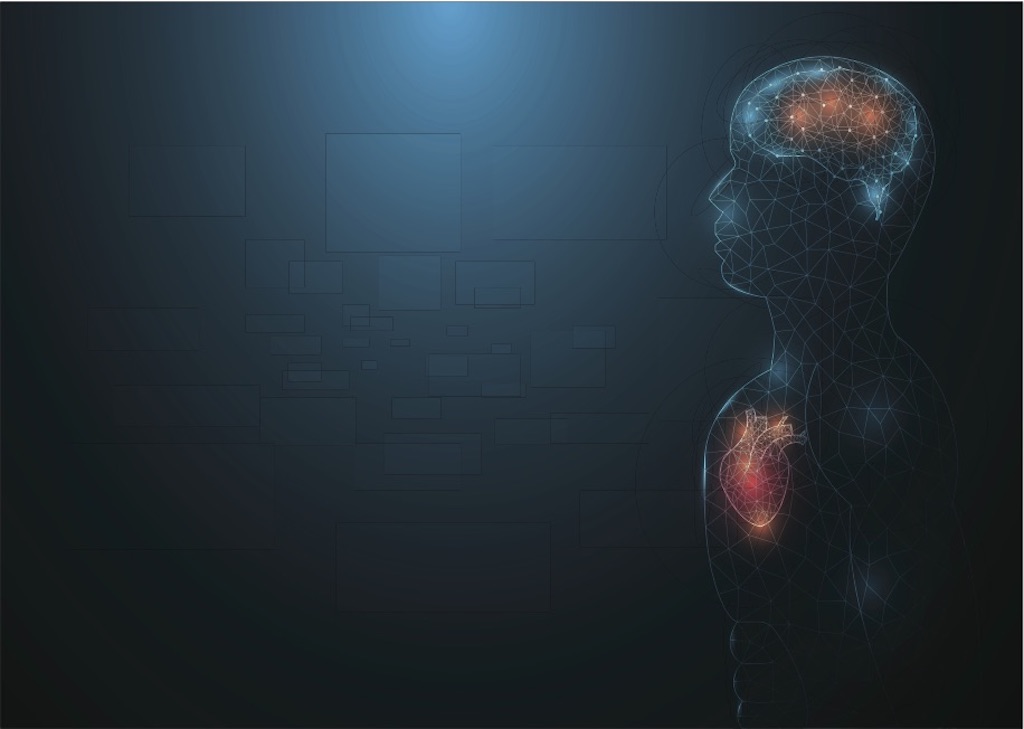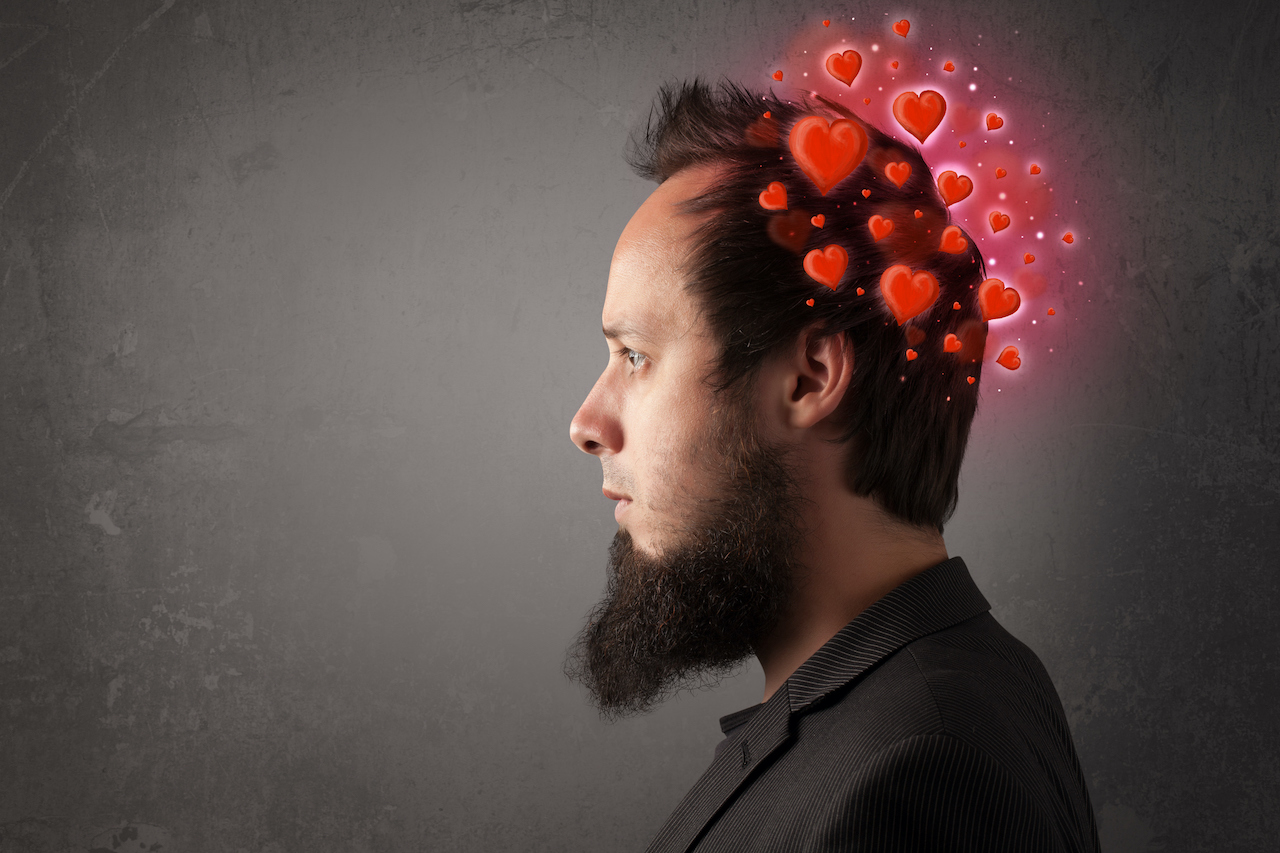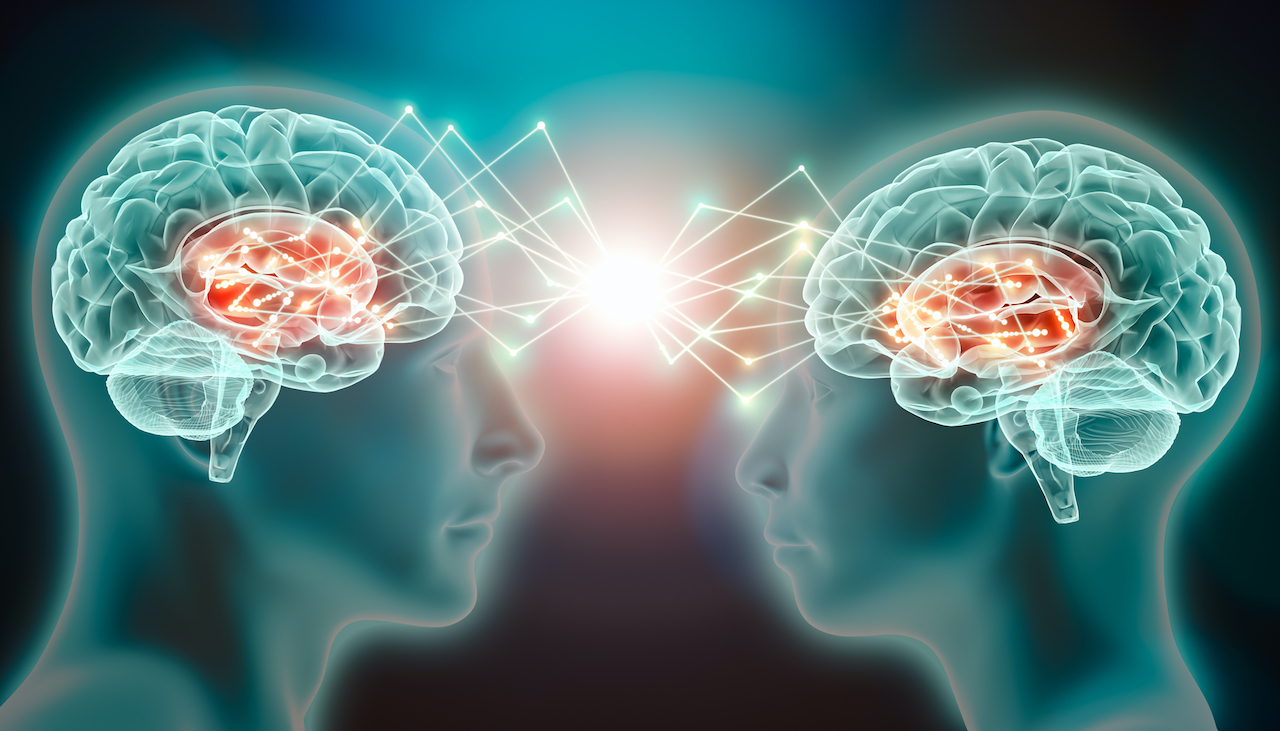What Chemicals Are in Love's Baby Soft Perfume
12 scientifically proven signs you lot're in dearest

You may have experienced some signs you're in honey. Can't get someone out of your head? Daydreaming well-nigh them when you should be working? Imagining your futures together? These dizzying thoughts are merely a few of the telltale signs you're in love.
In fact, scientists have pinned downward exactly what information technology ways to "autumn in love." Researchers have found that the brain of a person in love looks very dissimilar from one experiencing mere lust, and it's also different the brain of someone in a long-term, committed relationship. Studies led past Helen Fisher, an anthropologist at Rutgers Academy and one of the leading experts on the biological ground of honey, take revealed that the encephalon's "in beloved" phase is a unique and well-defined menstruation of time. Here are 13 telltale signs you lot're in love.
Thinking this one's special

When you're in love, yous brainstorm to think your dearest is unique. The belief is coupled with an disability to feel romantic passion for anyone else. Co-ordinate to a 2017 article in the journal Archives of Sexual Beliefs, this monogamy results from elevated levels of central dopamine — a chemical involved in attention and focus — in your brain.
Focusing on the positive

People who are truly in love tend to focus on the positive qualities of their beloved, while overlooking his or her negative traits. Co-ordinate to the Journal of Personality and Social Psychology, relationships are usually more successful when partners are idealized.
Those who are in dear also focus on niggling events and objects that remind them of their loved ane, daydreaming well-nigh these precious little moments and mementos. According to inquiry published in 2013 in the periodical Motivation and Emotion, being in dearest prevents people from focusing on other information.
This focused attention is also idea to upshot from elevated levels of key dopamine, too equally a fasten in fundamental norepinephrine, a chemic associated with increased memory in the presence of new stimuli.
Emotional instability

As is well known, falling in love frequently leads to emotional and physiological instability. You bounce betwixt exhilaration, euphoria, increased energy, sleeplessness, loss of appetite, trembling, a racing heart and accelerated animate, as well as feet, panic and feelings of despair when your relationship suffers even the smallest setback.
These mood swings parallel the behavior of drug addicts, according to a 2017 article in the journal Philosophy, Psychiatry and Psychology. And indeed, when in-beloved people are shown pictures of their loved ones, it fires upwards the same regions of the encephalon that activate when a drug addict takes a hit. According to Fisher, existence in love is a form of addiction and when this is taken away from someone they can experience "withdrawals and relapse".
Intensifying allure

Going through some sort of adversity with another person tends to intensify romantic attraction, according to Fisher'southward enquiry. Primal dopamine may exist responsible for this reaction, too, because research shows that when a reward is delayed, dopamine-producing neurons in the mid-brain region get more productive.
Intrusive thinking

People who are in love report that they spend, on average, more than 85 percent of their waking hours musing over their "love object," according to Fisher. Intrusive thinking, equally this form of obsessive behavior is called, may result from decreased levels of central serotonin in the brain, a condition that has been associated with obsessive behavior previously. (Obsessive-compulsive disorder is treated with serotonin-reuptake inhibitors.)
According to a 2012 study published in the Journal of Psychophysiology, men who are in honey have lower serotonin levels than men who are not, while the opposite applies to women. The men and women who were in love were found to be thinking about their loved one for around 65 percent of the time they were awake.
Emotional dependency

People in love regularly exhibit signs of emotional dependency on their human relationship, including possessiveness, jealousy, fright of rejection, and separation feet. For example, Fisher and her colleagues looked at the brains of individuals viewing photos of a rejected loved one, or someone they were still in love with afterwards existence rejected by that person.
The functional magnetic resonance imaging (fMRI) showed activation in several brain areas, including forebrain areas like the cingulate gyrus that have been shown to play a role in cocaine cravings. "Activation of areas involved in cocaine habit may assist explain the obsessive behaviors associated with rejection in love," the researchers wrote in 2010 in the Journal of Neurophysiology.
Planning a future

Longing for emotional union with a beloved, seeking out ways to get closer and day-dreaming almost a hereafter together are also signs of someone in beloved. According to an commodity by Harvard University, when serotonin levels begin to return to normal levels, the hormone oxytocin increases in the trunk. This neurotransmitter is associated with creating more serious relationships.
Lucy Brown, a neuroscientist at the Albert Einstein College of Medicine in New York, says this drive to be with another person is sort of like our drive toward h2o and other things we need to survive.
"Functional MRI studies show that primitive neural systems underlying bulldoze, advantage recognition and euphoria are active in virtually everyone when they look at the face of their beloved and think loving thoughts. This puts romantic honey in the company of survival systems, like those that brand usa hungry or thirsty," Brown told Live Science.
"I recollect of romantic beloved every bit part of the human reproductive strategy. It helps us form pair-bonds, which help united states survive. We were congenital to feel the magic of love and to be driven toward another"
Feelings of empathy

People who are in love by and large feel a powerful sense of empathy toward their beloved, feeling the other person's pain as their own and being willing to cede anything for the other person.
In Fisher's study, the scientists discovered significant patterns in the brain action of people who were in beloved. Their mirror neurons, which are linked to feelings of empathy, were more than agile in people who were in a long-term, loving relationship.
Aligning interests

Falling in love can consequence in someone reordering their daily priorities to align with those of their beloved. While some people may try to exist more like a loved one, another of Fisher'due south studies, presented in 2013 at the "Being Human" briefing, plant that people are attracted to their opposites, at least their "brain-chemical" opposites.
For instance, her research found that people with so-called testosterone-dominant personalities (highly analytical, competitive and emotionally contained) were oftentimes drawn to mates with personalities linked to loftier estrogen and oxytocin levels — these individuals tended to exist "empathetic, nurturing, trusting and prosocial, and introspective, seeking significant and identity," Fisher said in 2013.
Possessive feelings

Those who are deeply in love often experience sexual want for their love, but at that place are potent emotional strings attached: The longing for sex is coupled with a desire for sexual exclusivity, and extreme jealousy when the partner is suspected of infidelity. According to the Indian Journal of Endocrinology and Metabolism, oxytocin is released during sexual activity. This hormone creates social bonds and develops trust.
This attachment is idea to have evolved and then that an in-love person will compel his or her partner to spurn other suitors, thereby ensuring that the couple'due south courtship is not interrupted until formulation has occurred. According to Fisher this evolved equally a biological need, enabling people in romantic relationships to "focus [their] mating free energy on a particular individual".
Craving an emotional union

While the desire for sexual marriage is important to people in honey, the craving for emotional union takes precedence. Fisher'south 2002 report published in Archives of Sexual Behavior found that 64 percent of people in honey (the aforementioned percentage for both sexes) disagreed with the statement, "Sexual practice is the about of import part of my relationship with [my partner]."
Feeling out of control

Fisher and her colleagues plant that individuals who report being "in dear" unremarkably say their passion is involuntary and uncontrollable.
For her 1979 book "Honey and Limerence," the tardily psychologist Dorothy Tennov asked 400 men and women in Connecticut to respond to 200 statements on romantic dear. Many participants expressed feelings of helplessness, maxim their obsession was irrational and involuntary.
According to Fisher, one participant, a business concern executive in his early on 50s wrote this about an office crush, "I am advancing toward the thesis that this attraction for Emily is a kind of biological, instinct-like action that is non under voluntary or logical control. ... It directs me. I try badly to argue with it, to limit its influence, to channel information technology (into sex, for case), to deny it, to savour it, and, yes, dammit, to make her respond! Even though I know that Emily and I accept absolutely no gamble of making a life together, the thought of her is an obsession," Fisher reported in 2016 online in Nautilus.
Losing the spark

Unfortunately, being in beloved doesn't always last forever and psychologists say that the early euphoric stage lasts no longer than three years, according to Fisher's blog. It'south an impermanent land that either evolves into a long-term, codependent relationship that psychologists telephone call "attachment," or it dissipates, and the relationship dissolves. If there are physical or social barriers inhibiting partners from seeing i another regularly — for case, if the relationship is long-distance — and so the "in dearest" phase more often than not lasts longer than it would otherwise.
Additional resources
To find out why people crave love and learn more virtually the enquiry of Helen Fisher, you lot can watch her TED talk– The brain in beloved. For further reading nigh dear and the torso, the book The Scientific discipline of Love and Attraction, written by neuroscientist Dr. Guloglu, explores how and why people honey.
Bibliography
"Romantic dearest: An fMRI study of a neural mechanism for mate selection" The Journal of Comparative Neurology (2005). https://onlinelibrary.wiley.com/doi/abs/10.1002/cne.20772
"Differences in Neural Response to Romantic Stimuli in Monogamous and Not-Monogamous Men". Archives of Sexual Behaviour (2017). https://link.springer.com/article/x.1007/s10508-017-1071-9
"The benefits of positive illusions: Idealization and the construction of satisfaction in close relationships". Journal of Personality and Social Psychology (1996). https://psycnet.apa.org/record/1996-01707-007
"Reduced cognitive control in passionate lovers". Leiden, Universiteit (2013). https://world wide web.sciencedaily.com/releases/2013/eleven/131111091355.htm
"Addicted to love: What is love habit and when should it be treated?". Philosophy, Psychiatry and Psychology (2017). https://www.ncbi.nlm.nih.gov/pmc/articles/PMC5378292/
"Reward, Addiction, and Emotion Regulation Systems Associated With Rejection in Honey". Journal of Neurophysiology (2010). https://journals.physiology.org/doi/full/10.1152/jn.00784.2009
"Defining the brain systems of animalism, romantic attraction, and attachment. Archives of Sexual Beliefs (2002). https://www.researchgate.net/publication/11151468
Source: https://www.livescience.com/33720-13-scientifically-proven-signs-love.html
0 Response to "What Chemicals Are in Love's Baby Soft Perfume"
Post a Comment